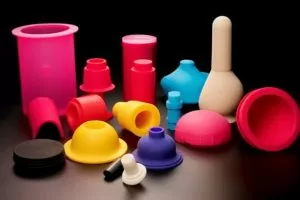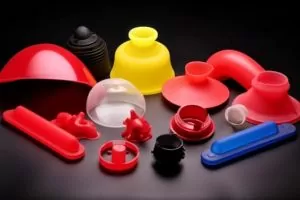Rubber products refer to natural and synthetic rubber as raw materials to produce a variety of rubber products activities, which also includes the use of waste rubber reproduction of rubber products.
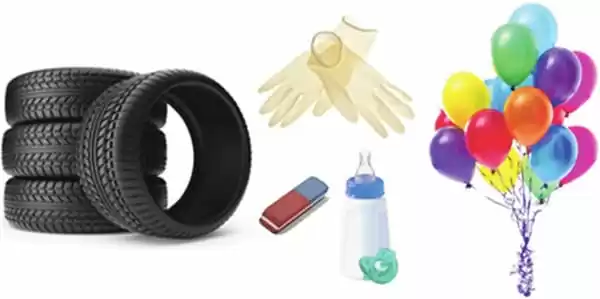
Types and characteristics of rubber
General-purpose rubber
1. Natural rubber NR: made from the latex of the trilobal rubber tree, the basic chemical composition is cis-polyisoprene, a polymer of isoprene.
It is the raw material for making tapes, hoses, and shoes, and is suitable for making shock-absorbing parts, products used in automobile brake fluid, ethanol, and other liquids with hydroxide roots.
Advantages: good abrasion resistance, high elasticity, tearing strength and elongation, acid and alkali resistance, and good overall performance.
Disadvantages: not heat resistant, not oil resistant (vegetable oil resistant), easy to swell and dissolve in mineral oil or gasoline, alkali resistant but not strong acid resistant. It is easily aged in the air and becomes sticky in the heat.
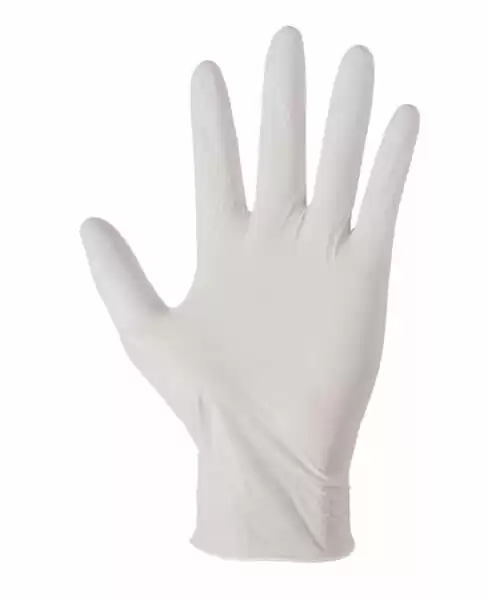
2. Isoprene Rubber IR: full name is-1,4-polyisoprene rubber, high cis synthetic rubber made from isoprene, produced by the solution polymerization method. Because its structure and properties are similar to natural rubber, it is also known as synthetic natural rubber.
It can replace natural rubber in the manufacture of heavy-duty tires and off-road tires, and can also be used to produce a variety of rubber products.
Advantages: Like natural rubber, it has good elasticity and wears resistance, excellent heat resistance and chemical stability, and better quality uniformity and processing performance than natural rubber.
Disadvantages: the strength of raw rubber (before processing) is significantly lower than that of natural rubber.
3. Styrene butadiene rubber SBR: made from copolymerization of butadiene and styrene. It is the most widely produced general-purpose synthetic rubber, which is divided into emulsion polymerized styrene butadiene rubber, solution polymerized styrene-butadiene rubber, and thermoplastic rubber (SBR) according to the production method. It is widely used in the tire, footwear, cloth, conveyor belt, etc.
Advantages: Low-cost non-oil resistant material, good water resistance, good elasticity below 70 hardness, poor compressibility at high hardness. Compared with natural rubber, it has uniform quality, less foreign matter, better wear resistance and aging resistance, good overall performance, and chemical stability, and can be used in combination with natural rubber.
Disadvantages: Weak mechanical strength, not recommended to use strong acid, ozone, oil, oil ester, fat, and most of the hydrocarbons.
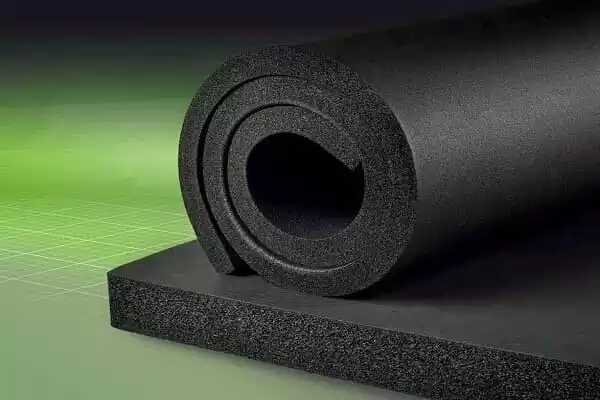
4. Cis-Butadiene rubber BR: full name cis-1,4-polybutadiene rubber, made from butadiene by solution polymerization.
Most of them are used in the production of tires, and a few are used in the manufacture of cold-resistant products, cushioning materials, as well as tapes and shoes.
Advantages: after vulcanization, butadiene rubber has particularly excellent cold resistance, wear resistance and elasticity, less heat generation under dynamic load, good aging resistance, easy to use with natural rubber, neoprene, nitrile rubber, etc.
Disadvantages: poor tear resistance, poor wet-slip resistance.
5. Chloroprene CR: made of chloroprene as the main raw material, through homopolymerization or a small amount of other monomers copolymerization. Vulcanized rubber elasticity and wear resistance, the formula does not contain sulfur, so it is very easy to make, has particularly good weather resistance, not afraid of intense twisting, not afraid of refrigerants, is resistant to dilute acids, silicone ester lubricants, the general use of temperature range of -50-150 ℃.
Neoprene is widely used, such as the production of transport belts and transmission belts, wire and cable covering materials, the manufacture of oil-resistant hoses, gaskets, and chemical corrosion-resistant equipment lining.
Make a variety of direct contact with the atmosphere, sunlight, and ozone parts. Suitable for a variety of flame-resistant, chemically resistant rubber products. Not recommended for use among strong acids, nitrocarbons, esters, chloroform, and ketones, seals resistant to R12 refrigerant, rubber parts, or seals on household appliances.
Advantages: Good overall performance, such as high tensile strength, water, oil, flame, heat, light, aging, oxidation, and ozone resistance. Good elasticity and compression deformation, resistance to animal and vegetable oils, will not be affected by neutral chemicals, fats, grease, oils, and solvents, with anti-combustion properties. High chemical stability.
Disadvantages: Density is large, easy to crystallize and harden at room temperature, bad storage, electrical insulation performance, poor cold resistance, easy to crystallize and harden at low temperature, raw rubber is not stable in storage. Not resistant to phosphate ester hydraulic oil. The expansion amount is large in the mineral oil with a low aniline point.
6. Ethylene propylene rubber EPDM: synthesized by ethylene and propylene as the main raw material, has good chemical stability, wear resistance, elasticity, oil resistance, and styrene-butadiene rubber close. In the EP main chain, a small number of double chains of the third component can add sulfur into EPDM, the general use temperature of minus 50-150 ℃.
Excellent resistance to polar solvents such as alcohols, ketones, etc. The use is very wide and can be used as tire sidewall, rubber strip, inner tube, and automobile parts, for wire, cable cover, and high pressure, ultra-high pressure insulation materials. It can be used as light-colored products such as rubber shoes and sanitary products.
Can be filled with oil in large quantities and filled with carbon black, products are less expensive and often used in high-temperature water steam environments, bathroom equipment seals, or parts. Rubber parts in the braking (brake) system. Seals in radiators (automotive water tanks).
Advantages: good resistance to weathering and ozone, excellent resistance to water and chemicals, alcohols and ketones can be used, high-temperature vapor resistance, good impermeability to gases. Heat resistance, aging resistance, ozone resistance, and electrical insulation stability are excellent.
Disadvantages: not recommended for food use or exposure to aromatic hydrocarbons.
7. Butyl rubber IIR: polymerization of isobutylene and a small amount of isoprene, due to the steric hindrance of methyl molecule movement than other polymers, the general use temperature range of -54-110 ℃.
It is commonly used in the inner tube of automobile tires, leather bags, rubber paste paper, window frame rubber, steam hose, heat-resistant conveyor belt, etc.
Advantages: impermeable to most gases, resistant to heat, sunlight, and ozone, good electrical insulation; resistant to polar solvents, can be exposed to animal or vegetable oils or vaporizable chemicals.
Disadvantages: Not recommended for use with petroleum solvents, kerosene, and aromatics.
A special type of rubber
A special type of rubber refers to rubber with some special properties.
1. Nitrile rubber NBR: a polymer made of butadiene and acrylonitrile copolymerized by emulsion, the higher the acrylonitrile content, the better the oil resistance, but the cold resistance is reduced accordingly.
The general use temperature range is minus 25-100 ℃. NBR is known for its excellent oil resistance. It can be used in the air at 120 ℃ or in the oil at 150 ℃ for a long time. The electrical conductivity is relatively good.
Widely used, mainly for oil-resistant products, a variety of oil-resistant gaskets, gaskets, sleeves, soft packaging, soft rubber hose, printing and dyeing rollers, cable rubber materials, and anti-static rubber products.
In the automotive, aviation, petroleum, copying, and other industries to become essential elastic materials. Various sealing products, flame retardant products, and phenolics are used as structural adhesives.
Advantages: good resistance to oil, water, solvent, and high-pressure oil. Good compressibility, elongation, abrasion resistance, aging resistance, air tightness, and excellent bonding properties.
Disadvantages: Not suitable for use in polar solvents, such as ketones, ozone, and nitrocarbons, MEK can be blended with natural rubber. Ozone resistance, electrical insulation, and cold resistance are poor.
2. Hydrogenated nitrile rubber HNBR: Nitrile rubber is made by removing part of the double chain after hydrogenation, and its temperature resistance and weather resistance are much higher than general nitrile rubber, and its oil resistance is similar to general nitrile rubber. The general use temperature range is -25-150 ℃.
It is suitable for use in the laundry or dishwashing detergents and is widely used in environmental protection refrigerants, seals in R134a systems, and seals in automobile engine systems.
Advantages: good anti-wear properties, excellent corrosion, tension, tear, and compression resistance. Good resistance to atmospheric conditions such as ozone.
Disadvantages: Not recommended for use in alcohols, esters, or aromatic solutions.
3. Silicone rubber Q: The main chain consists of alternating silicon and oxygen atoms to form the main chain, and the side chains are carbon groups with organic groups on the silicon atoms.
The most used silicone rubber with side chains of ethylene. Both heat and cold resistant, the use temperature is between 100-300 ℃, and it has excellent weather resistance and ozone resistance and good insulation.
Silicone rubber products are biocompatible materials and are closely related to people’s lives. Remote controls, keyboards, pos machines, scanners, cell phones, electronic dictionaries, cell phone covers, etc. are all related to silicone rubber.
Mainly used in the aviation industry, electrical industry, food industry, and medical industry, etc. Colorless silicone rubber products are non-toxic and can be used as artificial organs, used in the beauty industry and physical therapy industry, etc.
Advantages: high and low-temperature resistance, ozone resistance, good electrical insulation.
Disadvantages: low strength, poor tear resistance, poor wear resistance.

4. Fluorine rubber FKM: fluorine rubber is a synthetic polymer elastic polymer with fluorine atoms attached to the carbon atoms of the main or side chains of the molecule by polymerization or condensation of fluorine-containing monomers.
Due to the different fluorine-containing monomers used, there are many varieties of fluorine rubber, which can be divided into fluorinated olefin copolymers and nitroso copolymers.
It is usually expressed by the number of fluorine atoms in the fluorine-containing units in the copolymer, such as fluoroelastomer 23, which is a copolymer of vinylidene fluoride and trifluorochloroethylene.
According to the chemical composition can be divided into fluorine-containing alkene class fluorine rubber, fluorosilicone rubber, nitroso fluorine rubber, fluorinated acrylate rubber, fluorinated phosphonitrile rubber, perfluorinated ether rubber, etc.
It is widely used in modern aerospace, aviation, automobile, petroleum, and household appliances, and is a key material that cannot be replaced in the national defense cutting-edge industry.
Advantages: high-temperature resistance, oil resistance, corrosion resistance, oxidation resistance, solvent resistance, flame resistance, chemical resistance, and weather resistance.
5. Polysulfide rubber PSR: polysulfide condensation of haloalkane and alkali metal or alkaline earth metal. In addition, there are polyurethane rubber, chlorohydrin, acrylate rubber, etc., mostly used with nitrile rubber.
Advantages: excellent resistance to oil and solvents.
Disadvantages: strength is not high, aging resistance, the processing is not good, and there is a bad odor.
6. Sponge rubber, also known as foam rubber, foam rubber, or microporous rubber, is a porous elastic material, which is a general term for a variety of rubber with eyelet structure.
This type of porous material pore throughout the material as a whole, according to the different eye structures, divided into the closed hole (eye and eye are not connected), open hole (eye and eye are not completely separated from each other by the hole wall, with a certain degree of connectivity) and mixed hole (both open hole and closed hole two kinds of structure).
Microporous rubber mainly includes two types of expanded rubber and sponge rubber. Including soft sponges, hard sponges, micro bubble sponges, conductive sponges, magnetic sponges, water expansion sponges, composite sponges, etc.
Sponge rubber products are widely used in sealing, shock absorption, heat insulation, sound insulation, printing and dyeing, and even ion exchange and many other aspects, in aviation, automotive, instruments, meters, home appliances, and the packaging industry have a wide range of applications.
Its shape has a plate, strip, tube, roller, gasket, etc., with a wide range of specifications and different shapes. Different conditions of use require different eyelet structures and aperture sizes. For this reason, the requirements in the formulation and processing technology are to make corresponding adjustments to achieve the corresponding use of performance.

The use of rubber
1. Transportation
The rubber industry is developed with the automotive industry. Rubber consumption occupies a considerable share of transportation. In sea, land, and air transportation, which is inseparable from rubber products.
For example, a Jiefang 4-ton load car requires more than 200 kg of rubber products, a hard-seat carriage needs to be assembled with a total weight of more than 300 kg of rubber products, a huge 10,000-ton ship needs nearly 10 tons of rubber products, a jet airliner needs nearly 600 kg of rubber.
As a means of transport tires, rubber spring shock-absorbing products for railroad vehicles and cars, large stores, stations, subways, and people carrying transport belts. In addition, there are “hovercraft” and “hovercars” made of rubber.
2. Industrial mines
The industrial sector needs a large number of large and small rubber products, many varieties, a wide range of uses, and some special requirements. The main products are tapes, hoses, sealing gaskets, rubber rollers, rubber sheets, rubber linings, and labor protection products.
In mining, coal, metallurgy, and other industrial applications tape, wire rope core transport belt or synthetic fiber transport belt to transport finished products.
Mining mill rubber lining, forged rubber instead of manganese steel, the service life increased by two to four times, but also reduce the noise, this product has been promoted around the world.
3. Agriculture, forestry, and water conservancy
In addition to tractors and agricultural machinery with a variety of tires, combine harvesters need to use rubber tracks, irrigation with pools, reservoirs using rubber impermeable layer and rubber dams, rubber boats, life-saving supplies, etc.
The amount is growing, in agricultural by-products processing equipment and forestry, animal husbandry, fisheries technology, equipment, etc., have rubber accessories.
Such as an iron cow – 40 type wheeled tractor, the need for rubber products of as many as 121 pieces. With the mechanization of agriculture, and farmland water conservancy development, the liquid rubber products needed will be more and more.
4. Military defense
Rubber is an important strategic material, in military defense and is very widely used, and military equipment, air force facilities, and national defense projects have a rubber footprint.
For example, a tank needs more than 800 kilograms of rubber; a 30,000-ton warship needs 68 tons of rubber, and there are many varieties of ships, tents, warehouses and protective gear, bathing clothes, etc. made of rubber.
As for national defense cutting-edge technology needs high-temperature resistance, low-temperature resistance, oil resistance, high vacuum resistance, and other special properties of rubber products are indispensable.
With the development of national defense modernization, the requirements can be resistant to the temperature range of minus 100-400 ℃ and can resist a variety of acids, alkalis, and oxidants with special properties of rubber are being developed and produced.
5. Civil engineering construction
Machinery used in building construction, transportation equipment, protective equipment, etc. has rubber products and accessories. For example, the glass window sealing rubber strips used in buildings, soundproof flooring, anechoic sponges, rubber carpets, rainproof materials, and with emulsion coatings.
Large rubber spring seat cushions are installed to reduce the vibration and noise caused by the subway and to mitigate the damage to buildings by earthquakes.
Mixing latex into cement can improve the elasticity and abrasion resistance of cement. Adding 3% of rubber or latex to asphalt to pave road surfaces prevents cracking and improves impact resistance.
6. Electrical communication
Another characteristic of rubber is that it has good insulating properties and is not easy to conduct electricity. Various wires and cables are made of rubber. Hard rubber is also used to make hoses, sticks, sheets, partitions, and battery cases. In addition, it is also widely used as protective supplies insulating gloves, insulating rubber boots and shoes, etc.
7. Medical health
In the medical and health sector, there are many rubber products in application, such as various hoses in hospitals, surgical gloves, ice capsules, sponge seat cushions, etc. are mostly rubber products.
As accessories of medical equipment and instruments also have rubber products. Medical rubber products often also have special requirements, such as non-toxic, sterilization, physiological inertia, radiation resistance, etc.
Butyl rubber has high biological inertia, chemical stability, and more micro-permeability and permeability used to process rubber bottle stoppers, which can ensure the preservation of highly hygroscopic, antibiotic, and anti-cancer agents.
The use of silicone rubber manufacturing artificial organs and human tissue substitutes has made great progress, but also use to make drug capsules, into the body at the appropriate location, so that the capsule drug is slowly and continuously released, both to improve the efficacy and relatively safe.
8. Commodity storage
Rubber film is widely used in the regulated storage of fruits and vegetables. Silicone rubber has superior permeability to CO2 and O2 and a proper permeability ratio.
According to the difference in respiration intensity and quantity of different fruits and vegetables, silicone rubber airbags of various sizes are made to maintain the right amount of CO2 inside the bags to form a good gas storage environment,
Thus inhibiting the respiration intensity of fruits and vegetables, slowing down the metabolic rate, delaying the post-ripening process of fruits and vegetables, reducing water evaporation, and preventing decay.
9. Education and sports
Commonly used in a variety of ball guts, table tennis paddle sponge rubber surfaces, swimming flippers, toy leather balls, gold pen guts, rubber, rubber ball, rubber line, rubber seal, rubber cloth, balloon, and sponge rubber pads, etc., widely used in cultural and educational institutions, offices, design, and drawing, as well as sports equipment.
10. Household goods
There are a lot of rubber products in daily life for our services, all over the urban and rural residents wear, it is a large consumption of rubber products. Such as raincoats, rubber shoes, hot water bags, elastic bands, children’s toys, sponge seat cushions, and latex-impregnated products.

